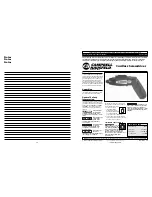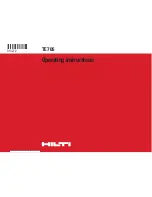
Usage Guidelines
Handling SRQ and the IEEE488.2 Status Structures
The first element of the Power Module Status Structure we should look at is the Events
Register.
The Events Register
The Events Register, together with its corresponding Events Enable Register generates
the summary bit. Note that the Events Enable Register is common to all the Power
Modules.
The Events Enable Register determines which of the Power Modules Events may cause
an SRQ.
The content of the Events Register is cleared when read.
The Events Register, in turn, receives its data from the filtered status registers. The status
registers’ data is filtered using the mask registers. The following paragraphs will describe
the behavior of the status registers and their associated mask registers.
The Error Code
This register holds the last known error detected by the Power Module. The content of
this register is cleared when read.
Whenever the Power Module detects a new error, the corresponding bit of the Event
Register is set as well (a positive fixed mask).
The Faults Register
This register indicates the faults detected by the Power Module’s controller. This is a
status register (showing the current state of the Power Module) but most of the faults are
“sticky” – the fault condition remains true until a reset command is issued.
Any new fault detected by the Power Module’s controller will cause the corresponding bit
of the Events Register to be set (a positive fixed mask). The exception to this rule is the
Sense Warning condition, which is depicted in the Faults Register but is filtered the same
way that warning events are (see bellow).
The Output Register
This status register depicts the current state of the Power Module’s output circuitry.
Any change in the Output status register will cause the corresponding bit of the Events
Register to be set (no masking).
The Warnings Register
This status register indicates warning conditions. As it is a status register, it will indicate
the current true state of the warnings.
Using the programmable mask registers (both positive and negative masks) the conditions
that will cause the WRN bit of the Events Register to be set can be determined.
These mask registers are individual to each Power Module and enable a very flexible
setup. A description of this feature is included in the Status Reporting chapter of the
Programming Manual.
What
happens
when power
is turned on
An IEEE488.2 defined command (*PSC) determines what will the XMP 2600 do with the
event enable registers when turned on.
The *PSC command may enable the XMP 2600 to clear all the events enable registers
and the SRQ Enable Register.
This feature ensures that the XMP 2600 wakes up with a known state. It also ensures that
the XMP 2600 will not generate undesirable SRQ’s at power on.
XMP 2600 Programming Manual
rev. 1.1
15
















































